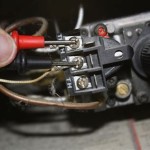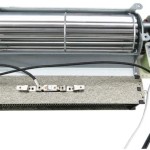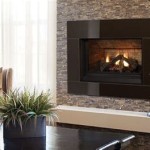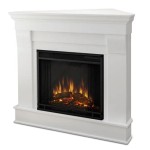Indoor Biofuel Fireplaces: A Comprehensive Overview
Indoor biofuel fireplaces represent a category of ventless fireplaces that utilize liquid bioethanol fuel to produce a clean-burning flame. These fireplaces have gained popularity as a decorative and supplemental heating option for homes, apartments, and other indoor spaces. The appeal lies in their relatively simple installation, modern aesthetics, and the absence of traditional chimney requirements.
Understanding the mechanics, benefits, and considerations associated with biofuel fireplaces is essential for potential buyers and users. This article aims to provide a detailed overview of indoor biofuel fireplaces, covering aspects from their operation to safety precautions.
Understanding Bioethanol Fuel
Bioethanol, the fuel source for these fireplaces, is an alcohol produced from fermented biomass, such as corn, sugarcane, or other agricultural products. The fermentation process converts the sugars in these materials into ethanol, which is then distilled and denatured to render it unfit for human consumption, preventing its misuse. Denaturing agents often include substances like denatonium benzoate, which imparts a bitter taste.
The resulting bioethanol fuel is characterized by its relatively clean burning properties. When combusted, bioethanol primarily produces carbon dioxide, water vapor, and heat. Compared to traditional wood-burning fireplaces, biofuel fireplaces emit significantly fewer pollutants, such as particulate matter, smoke, and creosote. This makes them a more environmentally friendly option for indoor heating and ambiance.
The purity of the bioethanol fuel directly impacts the quality of the flame and the amount of odor produced. Higher-quality fuels with a higher ethanol content typically burn cleaner and with less discernible odor. It is crucial to select reputable brands of bioethanol fuel specifically designed for use in indoor fireplaces.
Furthermore, the energy content of bioethanol is less than that of propane or natural gas. This means that biofuel fireplaces typically generate less heat output than traditional gas fireplaces of similar size. Their primary function is often decorative, providing ambiance and a supplemental source of warmth rather than serving as a primary heating system.
Key Features and Operation
Biofuel fireplaces are typically comprised of a fuel reservoir, a burner, and an enclosure or housing. The fuel reservoir holds the liquid bioethanol, which is then fed to the burner. The burner is designed to allow the fuel to evaporate and combust, creating a flame. The enclosure serves both aesthetic and functional purposes, containing the flame and providing a decorative element to the room.
The design and configuration of biofuel fireplaces can vary greatly. They can be freestanding units, wall-mounted models, or even integrated into existing furniture. Common materials used in their construction include stainless steel, glass, and stone, allowing for diverse aesthetic styles to suit different interior designs.
Operating a biofuel fireplace is generally straightforward. The fuel reservoir is filled with bioethanol according to the manufacturer's instructions. The fuel is then ignited using a long lighter or match. The flame intensity can often be adjusted by manipulating the burner opening, which controls the rate of fuel evaporation. To extinguish the flame, a snuffer or extinguishing tool is used to cut off the oxygen supply to the burner.
Many modern biofuel fireplaces incorporate safety features such as flame sensors, which automatically shut off the fuel supply if the flame is accidentally extinguished. Some models also include tilt sensors that deactivate the fireplace if it is tilted or knocked over, preventing fuel spillage.
Proper ventilation is still important when using a biofuel fireplace, despite their ventless design. While they produce less pollutants than wood-burning fireplaces, they still consume oxygen and release carbon dioxide. Ensuring adequate air circulation in the room is crucial to prevent the buildup of carbon dioxide and maintain a safe indoor air quality. Opening a window or running a ventilation system can provide sufficient airflow.
Safety Considerations and Maintenance
While biofuel fireplaces offer several advantages, safety should be paramount when operating them. It is crucial to adhere to the manufacturer's instructions and guidelines to minimize the risk of accidents or injuries. Improper use or neglect can lead to hazards such as fires, burns, or carbon monoxide poisoning.
Only use bioethanol fuel specifically designed for indoor fireplaces. Using other types of fuel or flammable liquids can result in uncontrolled fires or explosions. Always store bioethanol fuel in a safe and secure location, away from heat sources and out of reach of children and pets.
Never refill the fuel reservoir while the fireplace is burning or still hot. Allow the fireplace to cool completely before adding more fuel. Avoid overfilling the reservoir, as this can cause fuel spillage and increase the risk of fire. It is also crucial to avoid splashing fuel outside of the designated reservoir area when filling.
Keep flammable materials, such as curtains, furniture, and paper, away from the fireplace. Maintain a safe distance between the fireplace and any combustible surfaces. Never leave a burning biofuel fireplace unattended. It is best practice to always be present when the fireplace is in operation.
Regular maintenance of biofuel fireplaces is also essential for safe and reliable operation. Clean the fireplace regularly to remove any dust, debris, or fuel residue. Inspect the burner for any signs of damage or wear. If any issues are detected, consult a qualified technician for repairs or replacement parts.
Carbon monoxide detectors should be installed in the vicinity of the biofuel fireplace. Carbon monoxide is a colorless, odorless gas that can be produced during incomplete combustion. While biofuel fireplaces typically produce low levels of carbon monoxide, having a detector provides an added layer of safety in case of malfunction or inadequate ventilation.
It is essential to understand that biofuel fireplaces generate heat and can get hot to the touch. Exercise caution when near the fireplace, particularly if children or pets are present. Consider using a fire screen or guard to prevent accidental contact with the hot surfaces.
When buying a biofuel fireplace, it is important to check the manufacturer's certifications and safety ratings. Look for products that have been tested and approved by recognized safety organizations. This provides assurance that the fireplace meets established safety standards.

Freestanding Bio Ethanol Fireplace Feel Stand For Indoor Use
:max_bytes(150000):strip_icc()/Ethanol-Fireplace-via-smallspaces.about.com-56a889795f9b58b7d0f3278c.jpg?strip=all)
Using An Ethanol Fireplace In A Small Home

Bio Ethanol Fireplace

Recommended Room Size For Bio Fire Buy Them Here

Ethanol Fireplace Automatic Smart Remote Controlled Afire

Indoor Ethanol Fireplaces Planikafires

Ecosmart Fire Single Sided Bioethanol Fireplace Ecofire Co

Modern White Cylinder Bioethanol Fire Wood Burning Effect The Stove House

Ethanol Fireplace Pros Bio Fireplaces

Alden Bioethanol Fireplace








